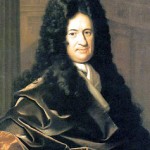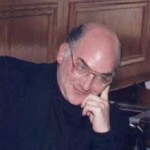If you search the Internet with the phrase “What is an Event” nobody is able to give an answer. Most of the time an Event is simply “Something that Happens“. If we look at the Dutch Language an Event is called a “Gebeurtenis“. The Dutch verb “beuren” means “to bear“. In Dutch an Event is a Bearing.
Bear: O.E. beran “bear, bring, wear” (class IV strong verb; past tense bær, pp. boren), from P.Gmc. *beranan (cf. O.H.G. beran, O.N. bera, Goth. bairan “to carry”), from PIE root *bher- meaning both “give birth” (though only Eng. and Ger. strongly retain this sense, and Rus. has beremennaya “pregnant”) and “carry a burden, bring”. Many senses are from notion of “move onward by pressure.” O.E. past tense bær became M.E. bare; alternative bore began to appear c.1400, but bare remained the literary form till after 1600. Past participle distinction of borne for “carried” and born for “given birth” is 1775. Ball bearings “bear” the friction; bearing “way of carrying oneself” is in M.E.
Strangely enough an Event is related to the Birth of Something. An Event is Happening when Something is Set into Motion by Pressure (Tension). An Event is an Act of Creation.
Most of the time an Event is associated with a Very Short Duration, an Explosion. An Event can take much longer. An Event can take one second or thousands of years. A Movie is an Event. The Great Pyramid is an Event. The Earth is an Event. You are an Event.
An Event changes its Intensity all the time. A Concert has a Start and an Apotheosis. The Great Pyramid was almost forgotten but at this moment many books are written about the mysterious background. An Event is a Wave or a Vibration and every Event has its Unique Pattern.
An Event has a Bearing (the direction or path along which something moves or along which it lies), it moves into a certain direction. An Event extends and compresses in Space/Time (A Hurricane). An Event is Born, Expands, Compresses, Dies and Dissepears. It follows a Life-Cycle.
If an Event is a Vibration it can be described by a combination of Harmonics and Sub-Harmonics. Dependent on the type of Vibration an Event “dies out” (Damping, converges to a limit) or never stops.
When Events are Vibrations or Waves they are able to Add Up. When an Event is “combined with” another Event a new Event is created. This is called Cause and Effect in the World of Particles.
The world of Particles was created by the Greek Philosopher Aristotle. He denied the existence of the Dynamic by stating ‘There cannot be motion of motion or becoming of becoming or in general change of change’. The Greek based their view on the world on Logic and Euclidean geometry. They considered the word As IT IS.
When you look at the Event of the”man who has just been run over” by a car, The Greek View is of two Colliding Parts. In this view somebody is Responsible for the Accident. When you look at the Event from the perspective of the Wave the Accident is an Addition of Two Waves that are producing a Peak of High Intensity. There is no one to blame. The accident “Just Happened”. It was an Act of the Force of Creativity, The Elan Vital of Bergson.
Let’s have a look at the Design of Information Systems.
A long time ago the Designers of the Computer left the path of the Analogue Computer. An Analogue Computer is based on Waves. A Digital Computer is unable to represent Real numbers and Irrational numbers (π). It is also unable to represent many rational numbers (1/3). Many “real” problems are happening in Real and Irrational Space.
Digital Computers are representing the Dynamic World in a Static Way. A Program and a Database are a Static Representations of Reality. The Static changes into the Dynamic because of the Regular Pulses of the Clock of the CPU (Central Processing Unit).
NIAM is still by far the most “advanced” way to define an Information System. It is hardly used because many designers don’t have the ability or have lost the ability to Listen to and to Analyze Sentences that are Spoken by the User of the System. The result of not-using NIAM is a highly chaotic internal structure of the Information System. The System is not representing Reality at all.
NIAM uses the concept of the Elementary Fact (an Elementary Event), A Man is-run-over-by A Car. An Elementary Fact is a connection between two Nouns (Man, Car) and a Verb (Run-Over-By). Mostly the Verb is forgotten. The Static is still Dominating the Dynamic. The Car (A Movement) and the Man (A Movement) are dominating The Accident, The Run-Over-By. Strangely Enough the Memory of the Car and the Man fade away much faster than the Memory of the Accident. A War is remembered. The Soldiers are forgotten.
I am afraid we have to wait a little while until the Very Strong Wave of the Particle has finally died out.
LINKS
“What is an Event”, About Whitehead and Deleuze by Steven Shaviro
Bergson, Mathematics, and Creativity by Pete A. Y. Gunter
About Events by Jerymy Dunham
About NIAM
3 Reasons Your Corporate Event Entertainment Is Important for Success
If you’re having a corporate event, you definitely want to get the most out of it. An often overlooked but very important part of events is entertainment. The entertainment at your next corporate event can be the one thing that determines if your event is a success or failure. Here are three reasons why entertainment is so important to your event’s success.
1. Entertainment engages guests
Good entertainment helps guests have fun. When guests have fun, they engage better with others and learn more. The energy of the event increases and the mood becomes a very positive one. At important parts of the event where you need to get your message across or teach your guests something, you can decrease the entertainment for a brief period of time and everything will be fine.
Carefully selecting entertainment is important. You should know exactly what type of guests you’ll be having, and then match the entertainment to the guests in appropriate ways. Most guests don’t realize the effect entertainment has on them, but that’s not important. The only thing that matters is that the entertainment is good enough and frequent enough to help your guests stay upbeat, engaged, and interested. Learn more about in-person event production.
2. Entertainment should reflect your values and vision
Your event entertainment is a direct reflection of your company. Entertainment that is in line with the image of your company will make a positive impression on your guests. Entertainment that isn’t will undoubtedly make your guests feel awkward, confused, and out of place.
Additionally, entertainment reflects the values and vision of the event itself. Entertainment that is matched to the purposes of the event helps the event run smoothly and naturally. Guests will feel comfortable and at ease throughout the event. They will be much more open and available to learn things about your company. By providing them with entertainment and valuable information, you’re reflecting the values and vision of your brand as well. In this regard, entertainment can be an invaluable asset that really gets your message across.
3. Entertainment helps reach potential clients
Successful events are ones that people talk about after. Entertainment is one of the best ways to make your event stick out in the minds of your guests. Good entertainment will cause your guests to talk about your event when they are working, taking a break from work, or even hanging out with friends. This will help spread your message and reach out to potential clients you never even knew about. The importance of event entertainment in this regard should not be underestimated. Many companies have received excellent referrals from the word that was spread about their event.
 Metaphysics
Metaphysics As You see it is possible to create many concepts and theories of Metaphysics just by Playing with the Verb To Be.
As You see it is possible to create many concepts and theories of Metaphysics just by Playing with the Verb To Be.

 Gilles Deleuze
Gilles Deleuze